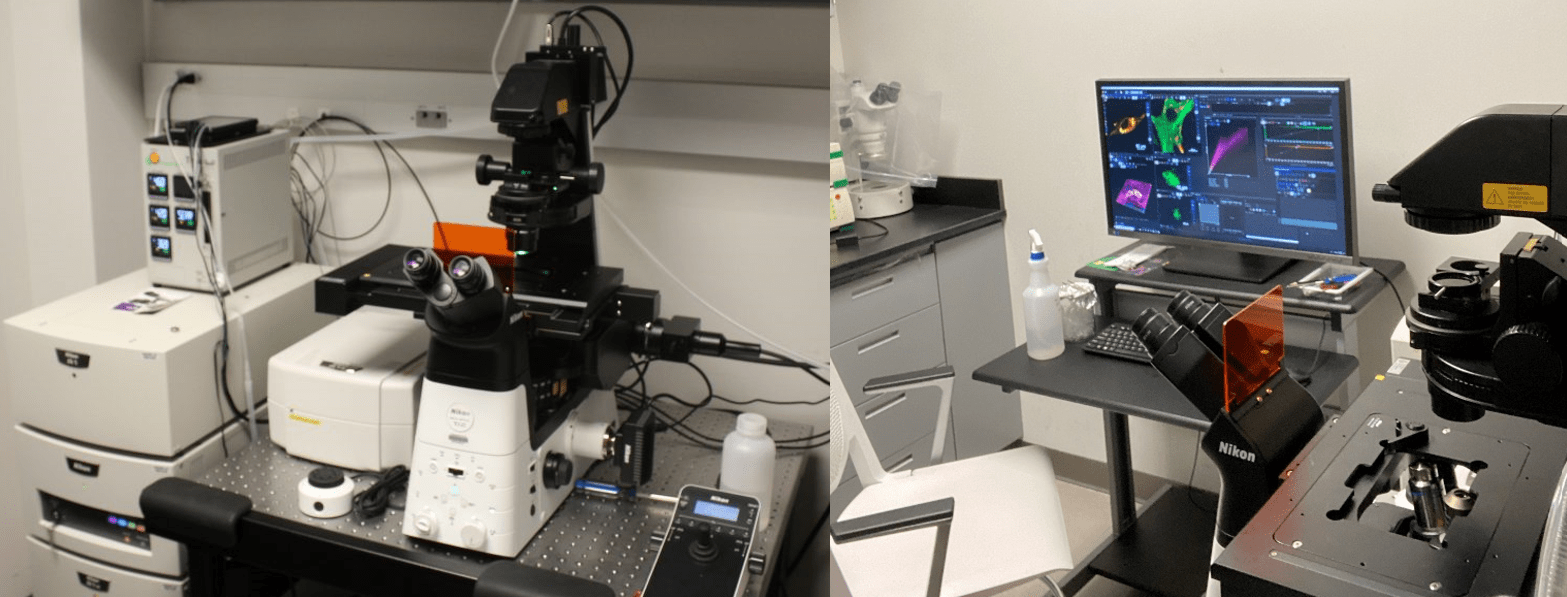Research
1. Defining the molecular interactions required for flavivirus genome packaging and virus assembly
Despite decades of research, many flavivirus assembly and replication aspects remain elusive. We investigate the intricate mechanisms underlying flavivirus assembly by defining the critical roles of structural and nonstructural proteins in viral genomic RNA packaging. Mechanistic understanding of the critical interactions involved in genome packaging and virus assembly will lead to identifying novel targets and strategies to combat these vector-borne pathogens.
 Image made in BioRender by Anastazia Jablunovsky Research questions:
Image made in BioRender by Anastazia Jablunovsky Research questions:
- How do intracellular dynamics of viral proteins and RNA coordinate the assembly of flaviviruses?
- What host pathways are involved in virus production and cellular membrane modification?
Relevant publications
- DiNunno et al. https://doi.org/10.1038/s41467-020-18747-4.
- Jablunovsky et al. https://doi.org/10.1371/journal.pntd.0011873
2. Mechanisms of tunneling nanotube formation by ZIKV and virus-host interactions at the maternal-fetal interface
Zika virus (ZIKV) has the unique ability of human-to-human transmission vertically from mother to fetus and horizontally through sexual contact. Vertical transmission is of particular concern because it can result in severe fetal microcephaly. However, scientists have struggled to understand the mechanisms that underlie maternal-fetal transmission of ZIKV on a cellular and molecular level. We investigate this phenomenon by studying host cell interactions and structure manipulations in ZIKV-infected cells.  Confocal microscope set for live-cell imaging of fluorescently-tagged viruses in infected cells. Research questions:
Confocal microscope set for live-cell imaging of fluorescently-tagged viruses in infected cells. Research questions:
- What are the roles of ZIKV non-structural proteins in inducing modified cell structures?
- What mechanisms are involved in hijacking the host pathways for intracellular modification, facilitating virus replication and dissemination?
- What pathways in the placenta are essential for ZIKV infection?
- Are there significant interactions between ZIKV and specific organelles, and how do they affect cell metabolism and viral transmission?
3. Intracellular functions and mechanisms of alphavirus ion channel 6K
 Image from ElMasri et al. 2022 Mosquito-borne alphaviruses such as chikungunya, Mayaro, and Eastern equine encephalitis viruses cause high morbidity and mortality in their mammalian hosts. Intracellular mechanisms that drive alphavirus assembly and budding represent promising antiviral targets. One potential drug target is the alphavirus-encoded ion channel protein 6K, which plays an essential part in virus budding by enabling the formation of cytopathic vacuoles-II and envelope spike protein transport to the plasma membrane.
Image from ElMasri et al. 2022 Mosquito-borne alphaviruses such as chikungunya, Mayaro, and Eastern equine encephalitis viruses cause high morbidity and mortality in their mammalian hosts. Intracellular mechanisms that drive alphavirus assembly and budding represent promising antiviral targets. One potential drug target is the alphavirus-encoded ion channel protein 6K, which plays an essential part in virus budding by enabling the formation of cytopathic vacuoles-II and envelope spike protein transport to the plasma membrane.  Image from ElMasri et al. 2022 Research questions:
Image from ElMasri et al. 2022 Research questions:
- What ions are transported by the alphavirus ion channel protein 6K?
- How does 6K contribute to virus budding?
- What is the general mechanism involving virus and host ion channels used by alphaviruses for efficient budding?
Relevant publications
- ElMasri et al. https://doi.org/10.1371/journal.ppat.1010892
4. Identifying the determinants of entry, replication, and vector specificity of tick-borne flaviviruses
 Image made in BioRender by Sydney Majowicz The Jose Lab uses Penn State’s Eva. J Pell Lab facilities to investigate the molecular mechanisms in virus replication, assembly, and neurotropism of BSL-3 flaviviruses, including the tick-borne Powassan virus. We study the emergence and genomic variability in the transmission dynamics of the Lineage II Powassan virus, also known as deer tick virus, which has become a public health concern in recent years due to its prevalence in environmental tick samples.
Image made in BioRender by Sydney Majowicz The Jose Lab uses Penn State’s Eva. J Pell Lab facilities to investigate the molecular mechanisms in virus replication, assembly, and neurotropism of BSL-3 flaviviruses, including the tick-borne Powassan virus. We study the emergence and genomic variability in the transmission dynamics of the Lineage II Powassan virus, also known as deer tick virus, which has become a public health concern in recent years due to its prevalence in environmental tick samples.  Image made in BioRender by Sydney Majowicz Research questions:
Image made in BioRender by Sydney Majowicz Research questions:
- What are the molecular drivers that are contributing to the emergence of tick-borne flaviviruses?
- Are genome changes in circulating Powassan viruses contributing to increased human infection and disease incidence?
- What are the virus-host interactions acting as the bottlenecks of tropism, and how are these changing over time?
- How do neurotropic flaviviruses, including Powassan virus, cross the blood-brain barrier, causing encephalitic disease?